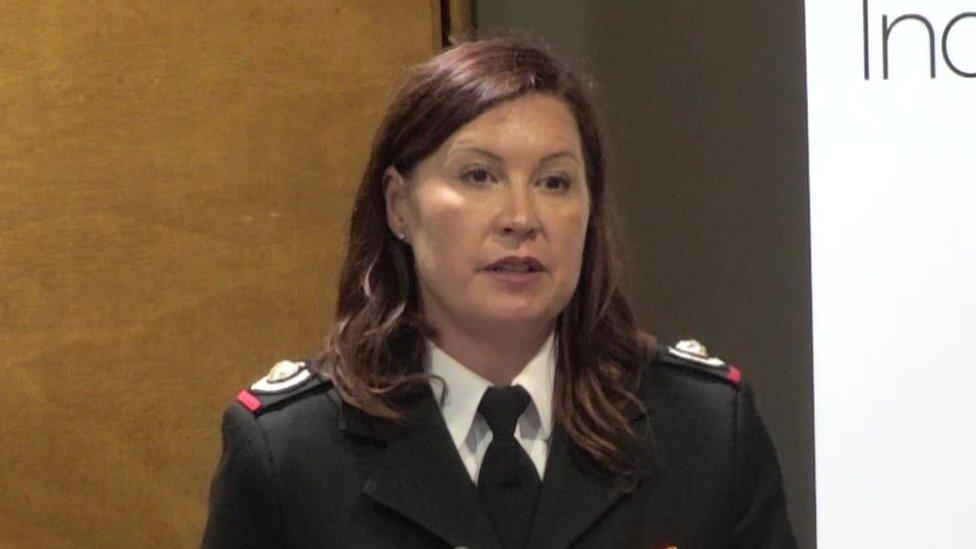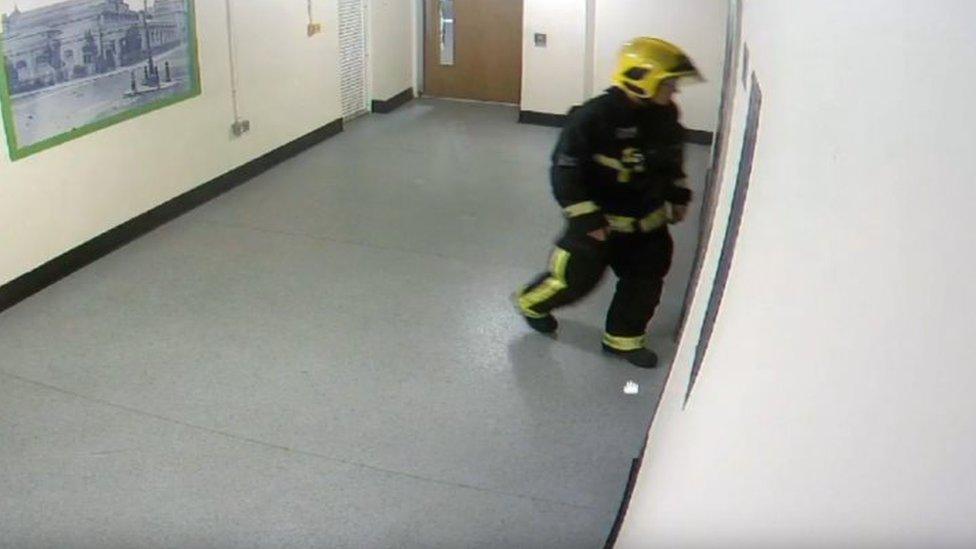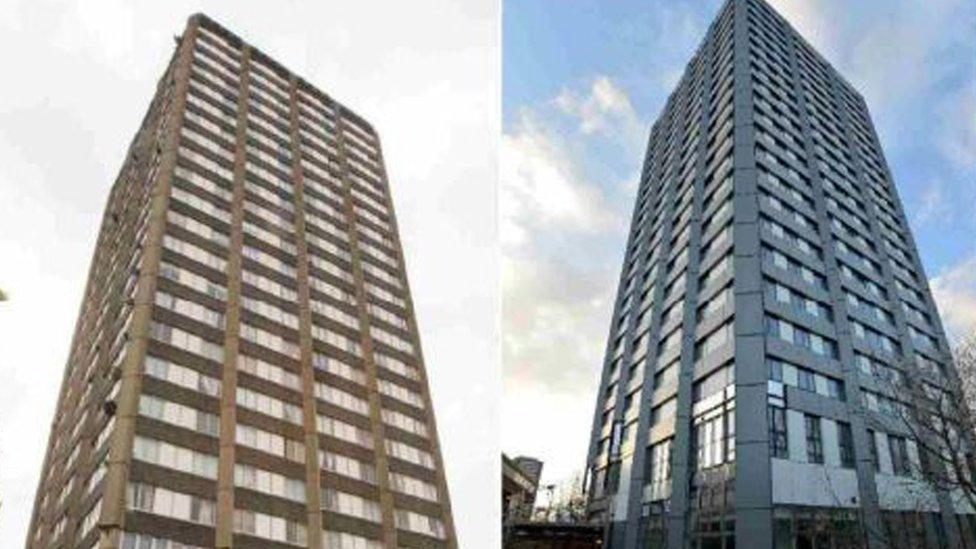Grenfell inquiry: Fire was 'first time' stay-put was dropped
- Published

Jo Smith was on call on the night of the fire last June
The fire room control manager who chose to abandon the "stay put" policy during the Grenfell fire said it was the first time such a decision had been made.
The "stay-put" advice to residents was in place until 02:47 BST - nearly two hours after the fire started.
But Jo Smith told an inquiry it was altered within 15 minutes of her arrival at the control room.
She said information being fed to her led her to believe residents "had no way of waiting to be rescued".
A "stay put" policy is based on the theory that buildings can be designed to prevent fire spreading, so a blaze in one flat should not be able to spread to another.
But expert reports submitted to the inquiry suggest that since 1974, major changes to Grenfell Tower destroyed that protection.
'Get out'
Ms Smith, a senior operations manager for the London Fire Brigade with 23 years experience, was on call on the night of the fire on 14 June 2017.
After arriving at the control room in Stratford, she said she found two operators who had been speaking to single callers for about 45 minutes each.
She said this indicated the situation was getting worse and made her "increasingly uncomfortable with the 'stay put' policy".
Ms Smith said her experience of working during the Lakanal House fire - the 2009 London tower block fire in which six people were killed - formed part of her decision to change strategy.
"I was aware of the previous Lakanal incident in which residents were in cleaner situations, less smoke, who were unable to be rescued," she said in her witness statement.
Referring to the change from 'stay-put' to 'escape', Ms Smith told the inquiry: "In practice, it's only ever been done once, to my knowledge."
The new advice to evacuate was then passed to fire brigade colleagues on the ground and residents on emergency calls.
Residents were advised to "get out, hold hands and get wet towels to put around themselves".
The inquiry heard that phone operator BT became involved in some of the calls, which would not happen in a normal incident, Ms Smith said.
They too were told of the change in policy to pass on to residents.
'No TV images'
The control room received 344 calls relating to Grenfell on the night of the fire, the inquiry heard.
Ms Smith described the influx as "utterly relentless".
She said a conscious decision was made "not to put the television news on during the incident" which was broadcasting images of the burning tower.
It was put to her that some operators had suggested seeing pictures of what was going on would have informed the advice they were giving.
But Ms Smith said it would "cause further distress".
"A number of us felt it was detrimental to have that on the screens whilst they were talking to callers," she added.
Ms Smith will continue giving evidence on Thursday, when the inquiry continues.
- Published4 June 2018

- Published29 June 2018

- Published4 June 2018
